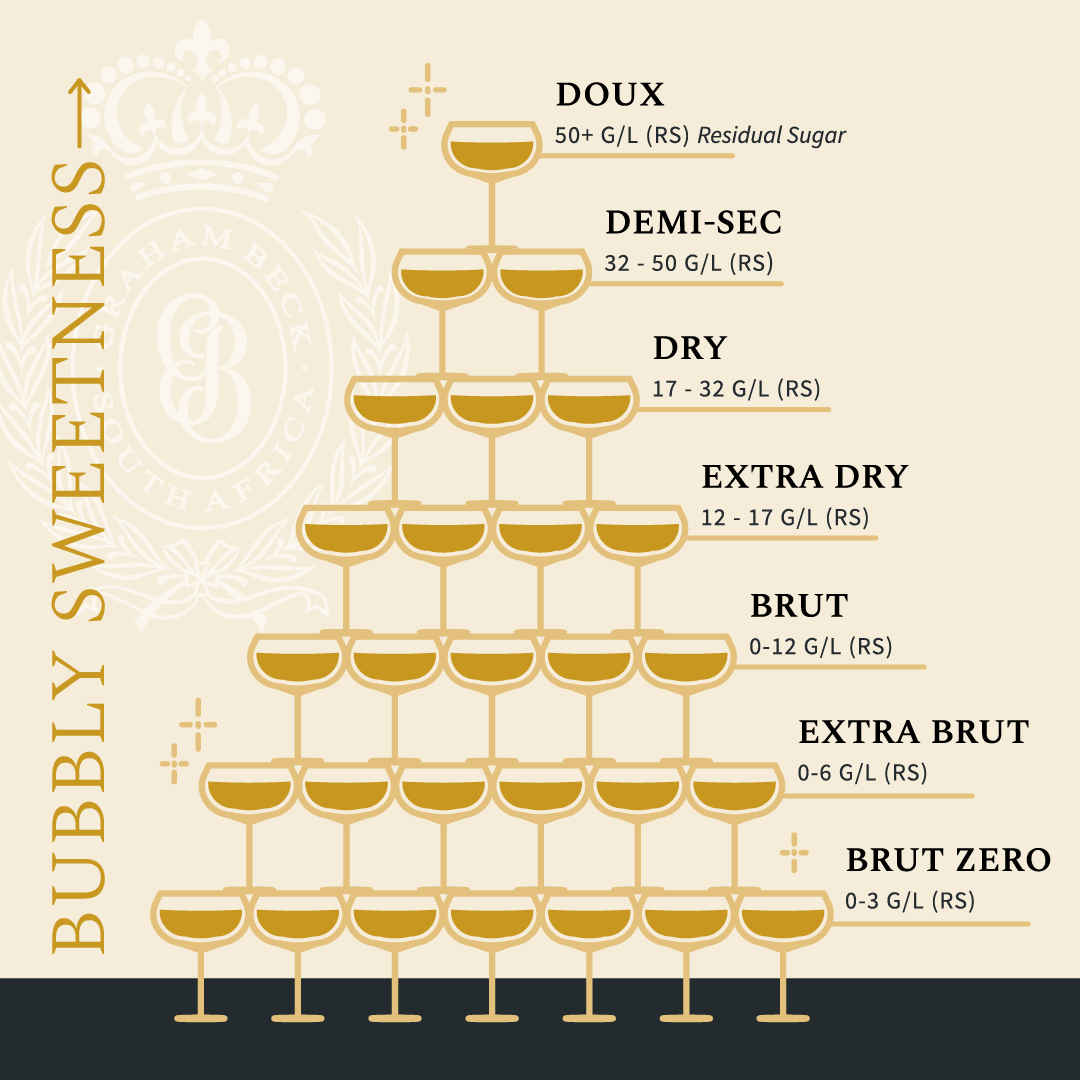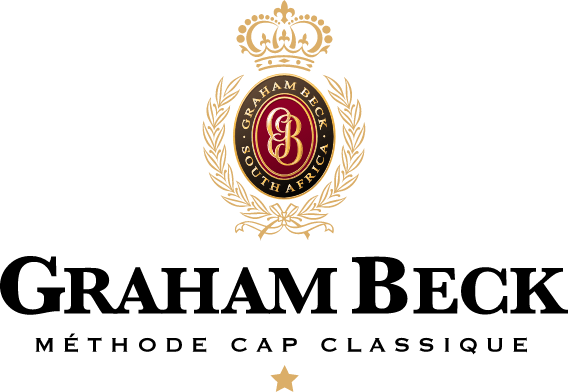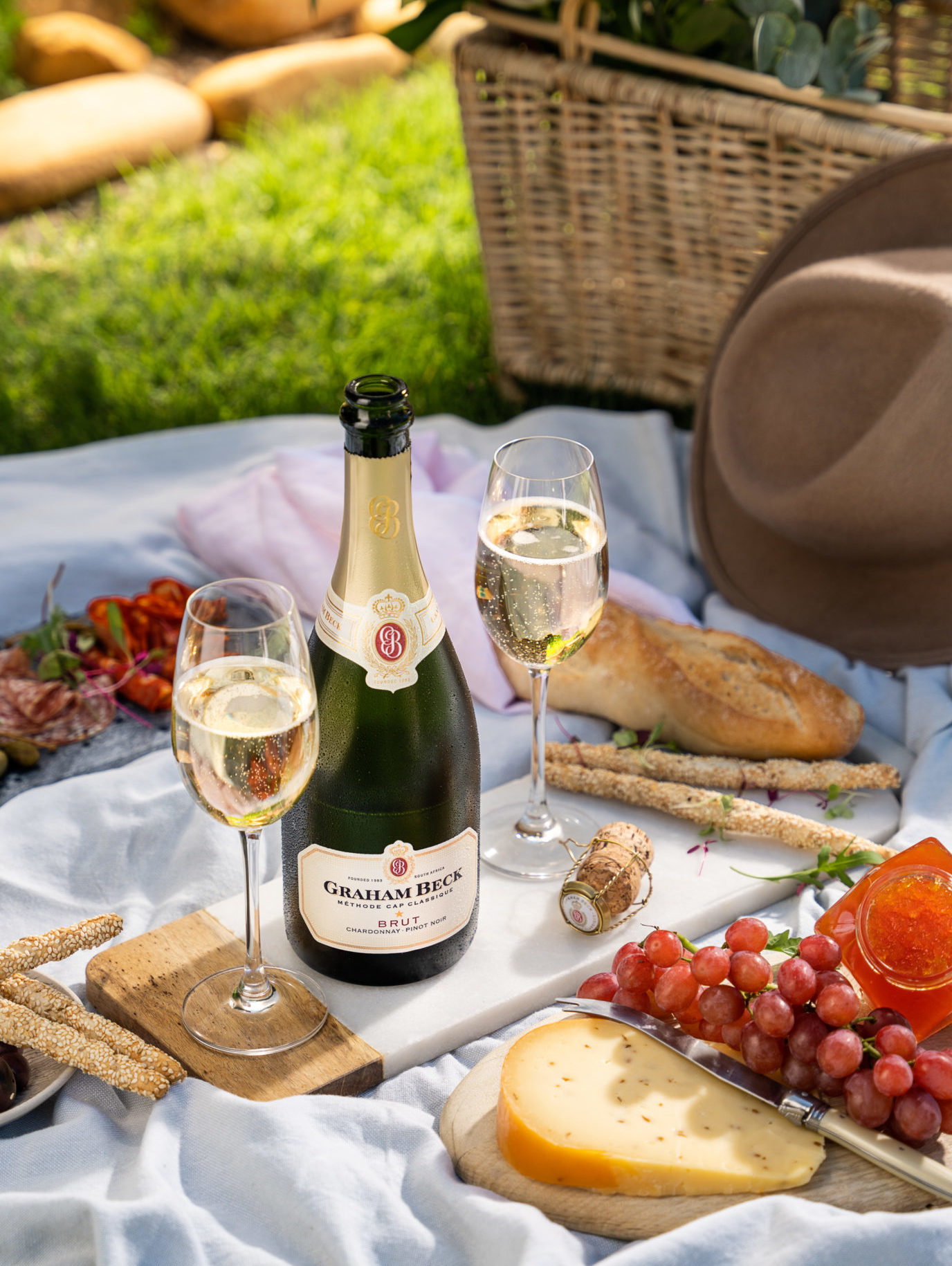From Zero to Bliss | How much sugar is in my glass of sparkling wine?
How sweet do you like your sparkling wine?
While some of us have a sweet tooth, others may prefer their sparkling wine bone dry. The scale of sweetness in traditionally-made bubbly ranges from very dry styles such as ‘Brut Nature’ and ‘Brut Zero’ to sweeter variations such as ‘Demi-Sec’ and ‘Doux’. The most popular style is Brut, meaning ‘unsweetened’ or ‘dry’ in French. It’s the most common bubbly available on wine lists, as it’s easy-drinking and food-friendly. Take five minutes to accustom yourself to the options, and you’re guaranteed to find something you’ll love!
#1: Where does sweetness in bubbly come from?
The sweetness comes from a step in the bubbly-making process called “liqueur d’expedition.” This is one of the final steps when a mixture (dosage) of wine and sugar (called the liqueur d’expedition) is added to fill bottles before the bottles are corked, wired, and labeled. To learn more about how our special sparkling wine (known as Cap Classique) is made, check this journal out.
Liqueur d’ expedition is a white wine that may or may not contain sugar. The amount of sugar in the liqueur will determine the amount of sweetness in your bubbly. The reason sugar is added is that sparkling wine is, by its nature, quite acidic. So adding some sugar softens the flavors, allowing the wine to feel smoother on the palate. It’s much like adding some sugar to your coffee – it all depends on how sweet you like it!

#2 From Brut to Doux: How does the scale of sweetness work?
Brut nature, extra brut, brut, extra sec (dry), sec (dry), demi-sec (half-dry), doux. Wait, what?
We know the terminology of bubbly can quickly get super confusing. Just try to remember that these terms are points on a scale of residual sugar left over after the process of making sparkling wine. Brut Nature is the driest; Doux is the sweetest.
Wondering which bubbly is best suited to your taste buds? Your best bet is to be adventurous and give them all a try before deciding! To help guide you, there is a standard scale from dry to sweet that winemakers keep to so that their sparkling wine can be categorized accordingly. Here’s how it works:
Brut Nature (aka Brut Zero) 0-3 g/L residual sugar (RS)
This is the driest wine style, with anywhere from 0 – 3 grams of residual sugar left per liter. Residual sugar refers to the natural grape sugars left over in a wine after the alcoholic fermentation is complete. A Brut Nature is ideal for anyone wanting to watch their sugar intake. It’s also one of the purest expressions of bubbly and particularly difficult to make with no sweetness to soften the flavors, meaning there is little room for the winemaker to hide. It has to be flawless!
Extra Brut 0-6 g/L RS
Extra Brut is not quite as dry as Brut Nature, but still highly acidic. It’s a good step if you want to work your way towards savoring the driest Brut Nature!
Brut 0-12 g/L RS
By far the most popular bubbly style, Brut is a dry sparkling wine despite being almost double the grams of sugar as an Extra Nature. It is the perfect middle-ground. It’s not too sweet or too dry, and that’s why it is ideal for food and as a crowd-pleaser.
Extra Dry (or Extra-Sec) 12-17 g/L RS
Extra Dry bubbly is a small level up in sugar from Brut (up to 5 grams more). ‘Sec’ is the french word for ‘dry’. This is a misleading term, as it refers to a reasonably sweet Champagne or sparkling wine. Savor this as an aperitif.
Dry (or Sec or Secco) 17-32 g/L RS
Despite its title, a Dry or Sec bubbly is quite sweet! This is an excellent bubbly of choice if you’re eating spicy food, as the sugar will help decrease the heat on your palate.
Demi-Sec 32-50 g/L RS
Now you’re going to taste the sweetness! This is a medium-sweet wine. Again, try not to be confused by the term—which translates literally to half-dry.
Doux 50+ g/L RS
The sweetest of the lot. Think of Doux as a dessert bubbly. That means it’s best served at the end of the night to close off a meal.
Want to learn more?
Join our newsletter.
#3: Find A Graham Beck bubbly to suit your taste
Graham Beck is proud to offer a wide gamut of styles to ensure you can always celebrate what matters. If you’re not 100% sure where to start, here’s how our sparkling wines are graded according to the international scale of sweetness described above:
Graham Beck Brut Zero = Brut Nature 2.7 g/l residual sugar (RS)
Made with zero sugar (hence the name), this extra-special bubbly is a great option if you want to cut down on sugar. It’s also a perfect accompaniment to light summer salads or seafood dishes. If guilt-free dining with pure, delicate bubbly sounds right up your alley, then look no further than Brut Zero.
Graham Beck Pinot Noir Rosé = Brut 6.1 g/l RS
A Vintage bubbly means that the grapes used are from just one year’s harvest. It’s not something that we do every year either—it’s reserved for particularly great years. With only 6.1 g/l of residual sugar (about 3.7 grams less than the Brut Rosé Non Vintage), this dry bubbly makes every day a special occasion. Between its salmon pink color, vibrant aromas of strawberries and cream, and flavors of raspberry jam, it’s hard to resist.
Graham Beck Blanc de Blancs = Brut 6.4 g/l RS
Blanc de Blancs translated means ‘white from white’, so this is a bubbly made only from Chardonnay grapes. As a Brut with only 6.4g/l of residual sugar, it is slightly more dry in style. Well-balanced with plenty of fruity aromas, this sparkling wine has a crisp freshness that really shines with food. Perfect for a sushi picnic in the park after a day spent at the beach.
Graham Beck Brut = Brut 9.2 g/l RS
This is the ultimate go-to bottle of bubbly. You know that friend that fits in with everyone and instantly becomes the life of the party? Yeah, that’s this bottle. Not too sweet, not too dry, it’s just right. It has very little sugar and pairs well with almost any food. Try it with delicious tapas at your next picnic.
Graham Beck Brut Rosé = Brut 9.8 g/l RS
This wine has a unique pale silver-pink hue and is categorized as a Brut with 9.8 g/l of residual sugar. Fun yet elegant and structured, it’s perfect for all seasons and settings. Its berry notes go perfectly with a Mediterranean feast, and it is an anywhere, anytime sparkling wine.
$0
Graham Beck Bliss Nectar Rosé = Demi-Sec 27 g/l RS
Classified as a Demi-Sec, the Bliss Rosé is the newest addition to the Graham Beck online store and a must-try if you do not like your bubbly dry. With its mouth watering honeyed flavors, the Bliss Nectar Rosé boasts a seductive sweetness and enchanting smoothness. The best part? Pajamas and popcorn complement this bubbly just as well as a cocktail dress and heels.
Graham Beck Bliss Nectar = Demi-Sec 33.1 g/l RS
Also a Demi-Sec, this is the sweetest of Graham Beck’s sparkling wines, but it is still well balanced. The ultimate crossover bottle, you could pair this with both savory and sweet foods thanks to its honey and stone fruit flavors. Living up to its name, a taste of this lively bubbly will turn any cocktail party or get-together into pure bliss.
At Graham Beck, we pride ourselves in crafting a focused range of sparkling wine that is worthy of every moment – no matter how big or small the moment might be! So whether you’re feeling up for something dry and wonderfully refreshing or want to indulge in the sweeter side of life, there’s always an excuse to add a little sparkle to your life.

